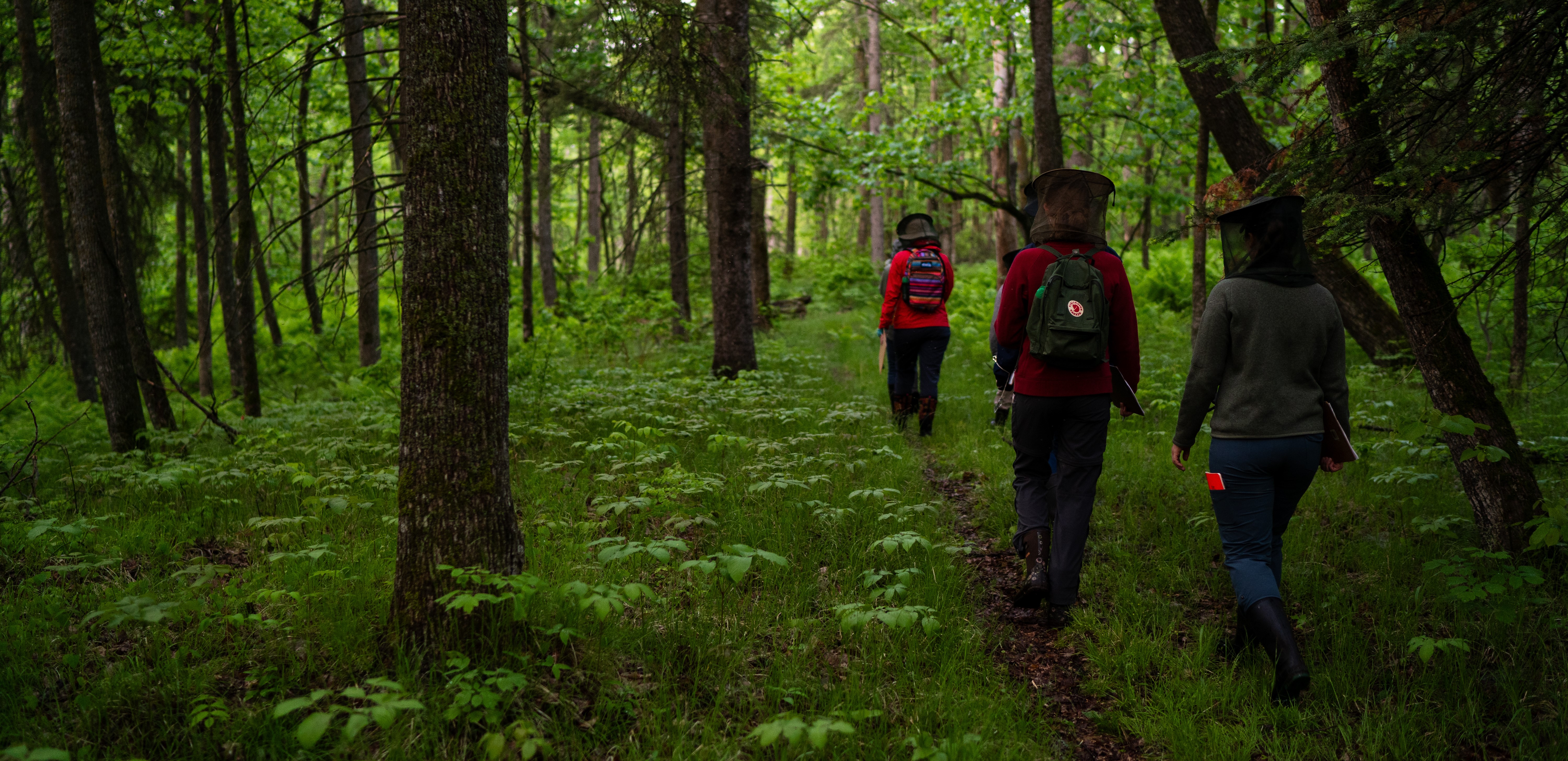Looking for datasets to support your research questions? Check out the resources below to enable new projects or support existing research. We can also help you get in touch with our current researchers. Questions? Contact the Station Scientist at ibsl@umn.edu for more information.
We are currently working to digitize additional datasets, and new data is always being collected, so check back often for updates.
Weather Data
IBSL has been collecting daily weather data since May 1, 1911. You can access these data in the NOAA database by selecting your dataset of interest and searching for the Itasca Station (ID: GHCND:USC00214106).
The graphs below show recent observed temperature and precipitation data compared to normal and historic high/low ranges.
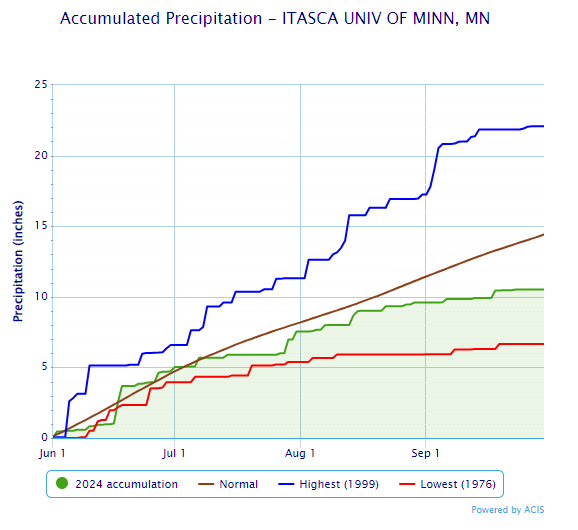
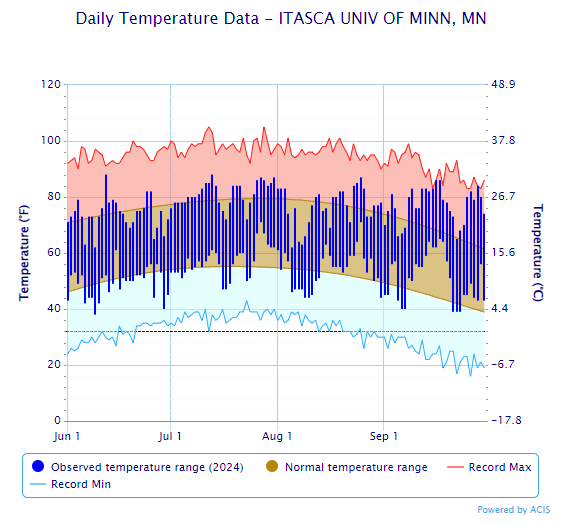
Lake Ice Tracking
Station staff have been tracking ice freeze and thaw dates for many lakes in the area since 1987. For Lake Itasca, data on spring ice out dates back to 1928. You can view and download a copy of these data here. You can also access them as a data package in the EDI repository, which includes more detailed metadata.
The Minnesota Department of Natural Resources and the Minnesota Pollution Control Agency collect ice freeze and thaw data for lakes across the state. You can access interactive maps of the year’s ice in and ice out dates.
The chart below shows the average date of ice freeze for several lakes in the region based on our collected data. Check back each season as we continue to track lake ice around Itasca.
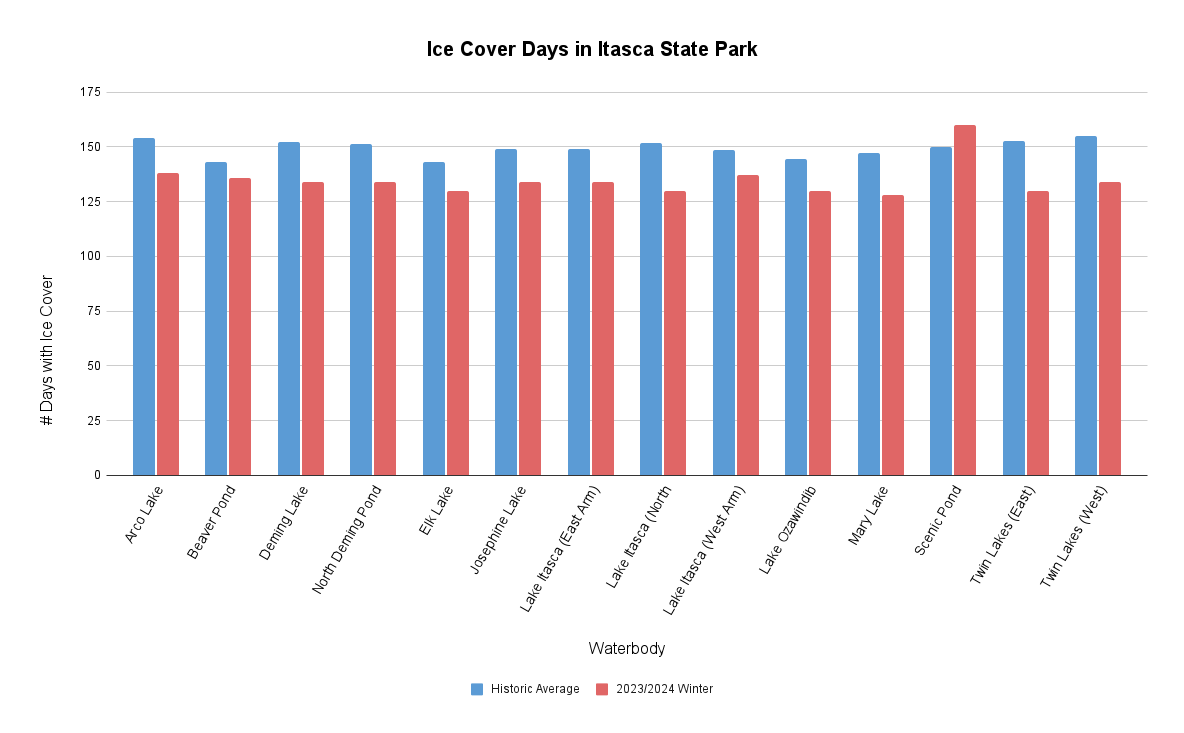
Lake Water Monitoring
A variety of lake water sampling projects have taken place in the Itasca region across many decades. Station staff are currently consolidating historic lake sampling data that dates back to the mid 1900s. Please contact the Station Scientist at ibsl@umn.edu for further information.
Currently, IBSL samples lakes in Itasca State Park and reports findings to the Minnesota Pollution Control Agency as part of their Volunteer Water Monitoring Program. You can view or download a spreadsheet of current data. Check back often as we add to this database every summer!
The charts below show measurements of water surface temperatures and water clarity readings taken with a secchi disk during the 2024 season.
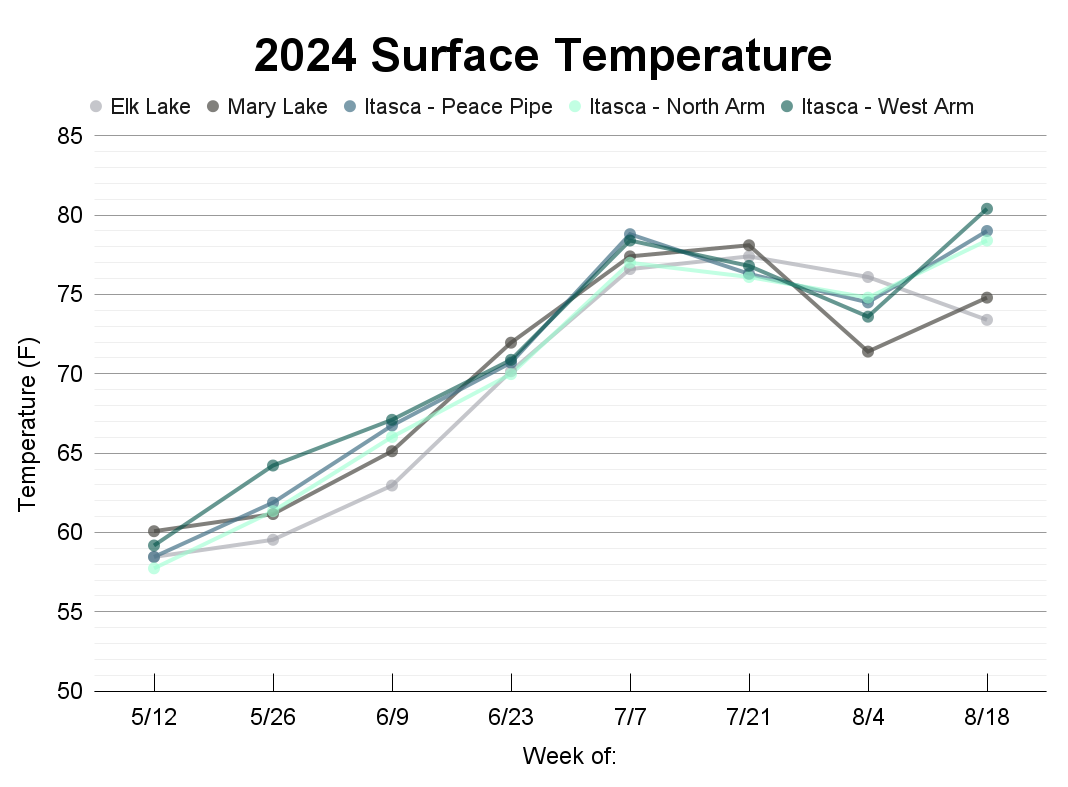
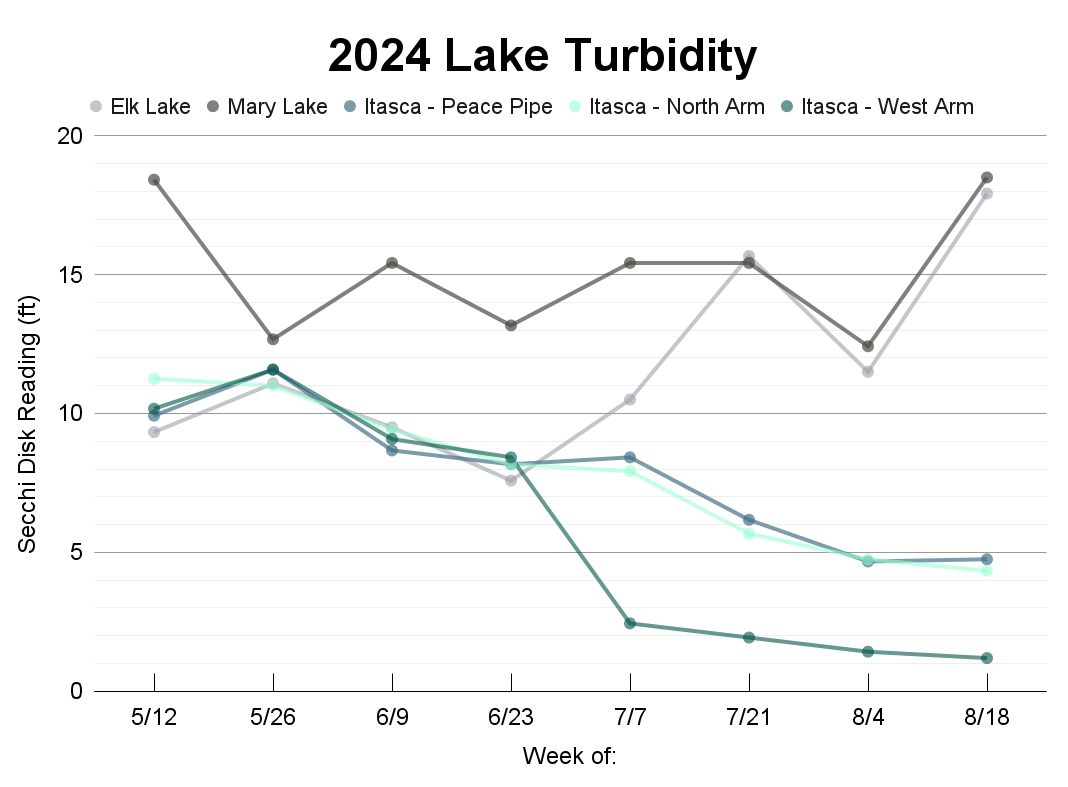
Bear Paw Breeding Bird Census
IBSL’s Field Ornithology course began conducting breeding bird surveys of Bear Paw Point in 1979. Each spring, students walk down Bear Paw Point to reflag the 50 by 50 meter grid spanning an 11.5 hectare plot. On several mornings throughout the course’s duration, students walk down a grid line and identify bird species based on their songs. Using these locations, students map out the different territories of individuals and species, thereby conducting a census of the breeding birds on Bear Paw Point each year.
See Canterbury and Blockstein (1996) and Zink and Eaton (2021) for more detailed information on the site’s history and methodology.
You can view and download a spreadsheet of these data here. They can also be accessed as a data package in the EDI repository, which includes more detailed metadata.
